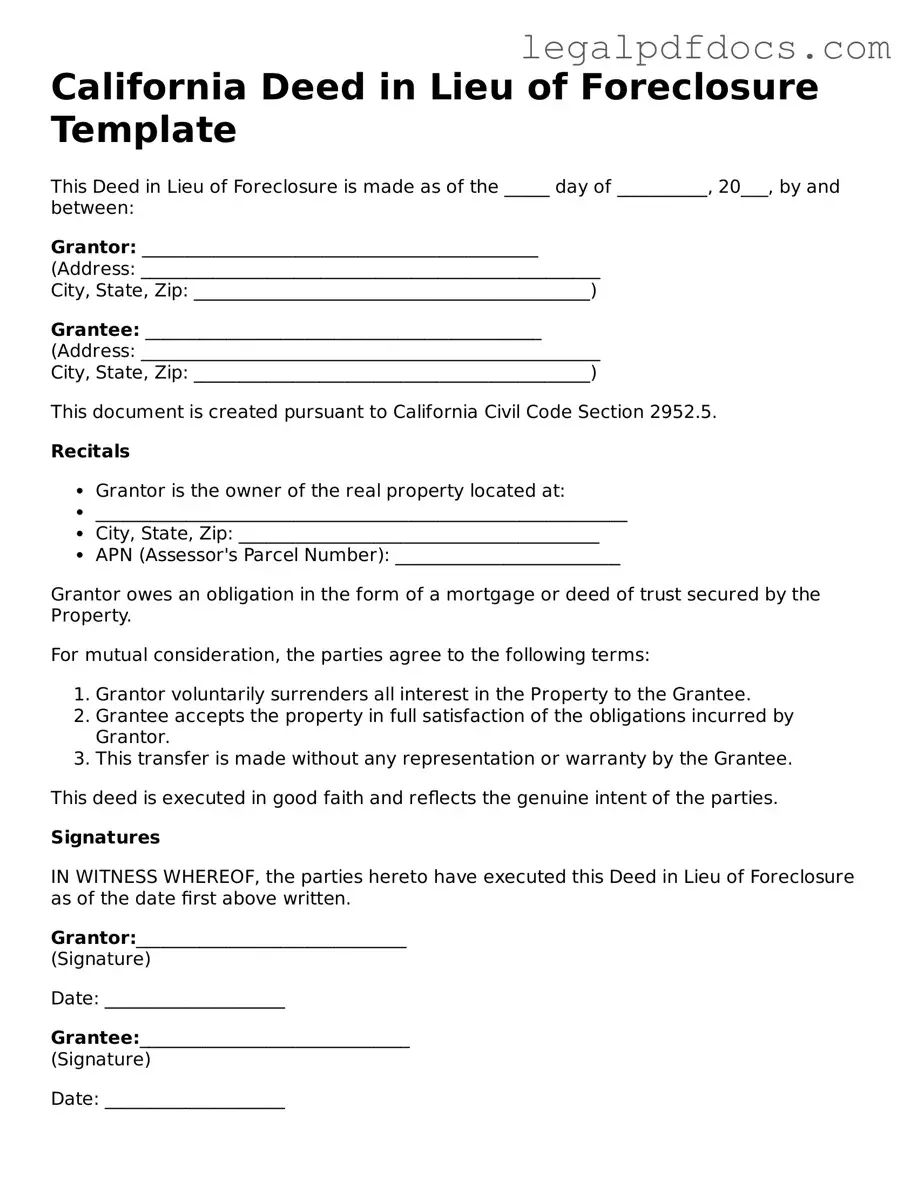Official Deed in Lieu of Foreclosure Form for California
A California Deed in Lieu of Foreclosure is a legal document that allows a homeowner to voluntarily transfer ownership of their property to the lender, helping to avoid the lengthy foreclosure process. This option can provide a fresh start for those facing financial difficulties, as it often results in less damage to the homeowner's credit. If you're considering this route, take the first step by filling out the form below.
Open Deed in Lieu of Foreclosure Editor Here
